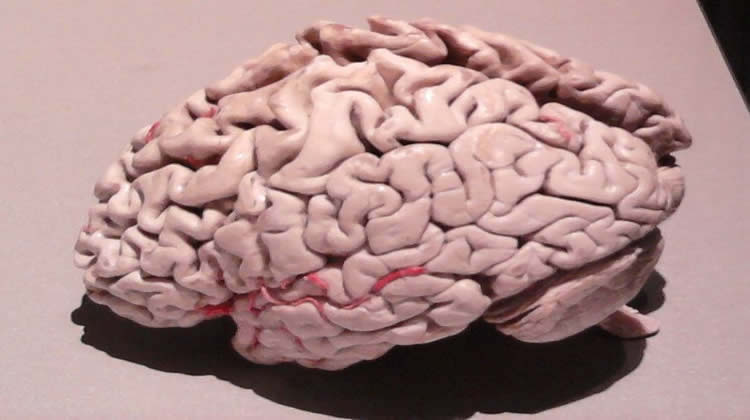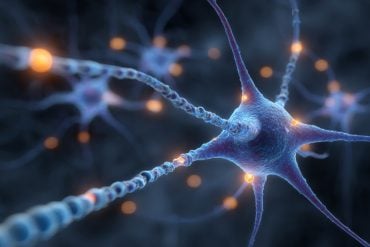New research in The FASEB Journal suggests that magnesium ions may slow the progression of the disease by disrupting the development of amyloid plaques.
New research published in the December 2015 issue of The FASEB Journal, shows that in mouse models of the disease oral administration of magnesium-L-threonate (MgT) alleviated cognitive decline by suppressing the Aβ deposition in amyloid plaques in an APH-1α/1β-dependent manner. Although questions still remain about how MgT permeates the blood-brain barrier, the work suggests that scientists may have found the key to a new series of Alzheimer’s disease treatments. Specifically, they show that magnesium ions target pharynx defective (APH)-APH-1α/1β-suppressing the A? deposition in amyloid plaques in an anterior pharynx defective (APH)-APH-1α/1β-dependent manner.
“We hope that our findings will help improve clinical practice pertinent to the optimal administration of Mg2+ for delaying or even preventing the onset of AD,” said Pu Wang, Ph.D., a researcher involved in the work from the Department of Life Science and Health at Shenyang, Liaoning, China. “Moreover, we hope to extend our experimental models to other disorders such as severe craniocerebral injury, bronchial asthma, chronic pulmonary heart disease, arrhythmia and myocardial necrosis, etc. and identify more targets of Mg2+ and strategies for treating these disorders.”
To make this discovery, Wang and colleagues used two groups of mice. The first group consisted of normal mice. The second group consisted of mice overexpressing a gene that enhances the expression of APH-APH-1α/1β and the production of Aβ, while also decreasing the Mg2+ influx in the brain, especially in cerebrospinal fluid. When researchers restored Mg2+ in the cerebrospinal fluid of the genetically modified mice, the highly induced APH-APH-1α/1β expression was inhibited, which resulted in alleviating Aβ aggregation and cognitive decline. Although the researchers did not find any direct evidence showing that MgT was able to penetrate the blood brain barrier, their findings showed elevated levels of Mg2+ in the brains of the genetically modified mice–sufficient for inhibiting the development of Alzheimer’s disease.

“The good news about this work is that if it holds up in humans, magnesium is a common element that is readily available,” said Gerald Weissmann, M.D., Editor-in-Chief of The FASEB Journal. “The bad news, of course, is that what works in mice does not always turn out so well in people. At the same time, even if magnesium ions do not work out for people with Alzheimer’s, this report will help researchers learn how to slow the development amyloid plaques, a hallmark of the disease.”
An additional study co-author is Lisa Renzi, a part-time clinical assistant professor at UGA’s department of psychology.
Source: Cody Mooneyhan – FASEB
Image Credit: The image is in the public domain
Original Research: Abstract for “By suppressing the expression of anterior pharynx-defective-1α and -1β and inhibiting the aggregation of β-amyloid protein, magnesium ions inhibit the cognitive decline of amyloid precursor protein/presenilin 1 transgenic mice” by Xin Yu, Pei-Pei Guan, Jing-Wen Guo, Yue Wang, Long-Long Cao, Guo-Biao Xu, Konstantinos Konstantopoulos, Zhan-You Wang, and Pu Wang in FASEB Journal. Published online December 2015 doi:10.1096/fj.15-275578
Abstract
By suppressing the expression of anterior pharynx-defective-1α and -1β and inhibiting the aggregation of β-amyloid protein, magnesium ions inhibit the cognitive decline of amyloid precursor protein/presenilin 1 transgenic mice
Alzheimer’s disease (AD) is associated with a magnesium ion (Mg2+) deficit in the serum or brain. However, the mechanisms regulating the roles of Mg2+ in the pathologic condition of AD remain unknown. We studied whether brain Mg2+ can decrease β-amyloid (Aβ) deposition and ameliorate the cognitive decline in a model of AD, the APPswe/PS1DE9 transgenic (Tg) mouse. We used a recently developed compound, magnesium-L-threonate (MgT), for a treatment that resulted in enhanced clearance of Aβ in an anterior pharynx-defective (APH)-1α/-1β–dependent manner. To further explore how MgT treatment inhibits cognitive decline in APP/PS1 Tg mice, the critical molecules for amyloid precursor protein (APP) cleavage and signaling pathways were investigated. In neurons, ERK1/2 and PPARγ signaling pathways were activated by MgT treatment, which in turn suppressed (by >80%) the expression of APH-1α/-1β, which is responsible for the deposition of Aβ and potentially contributes to the memory deficit that occurs in AD. More important, Aβ oligomers in the cerebrospinal fluid (CSF) further promoted the expression of APH-1α/-1β (by >2.5-fold), which enhances the γ-cleavage of APP and Aβ deposition during AD progression. These findings provide new insights into the mechanisms of AD progression and are instrumental for developing better strategies to combat the disease.—Yu, X., Guan, P.-P., Guo, J.-W., Wang, Y., Cao, L.-L., Xu, G.-B., Konstantopoulos, K., Wang, Z.-Y., Wang, P. By suppressing the expression of anterior pharynx-defective-1α and -1β and inhibiting the aggregation of β-amyloid protein, magnesium ions inhibit the cognitive decline of amyloid precursor protein/presenilin 1 transgenic mice.
“By suppressing the expression of anterior pharynx-defective-1α and -1β and inhibiting the aggregation of β-amyloid protein, magnesium ions inhibit the cognitive decline of amyloid precursor protein/presenilin 1 transgenic mice” by Xin Yu, Pei-Pei Guan, Jing-Wen Guo, Yue Wang, Long-Long Cao, Guo-Biao Xu, Konstantinos Konstantopoulos, Zhan-You Wang, and Pu Wang in FASEB Journal. Published online December 2015 doi:10.1096/fj.15-275578






